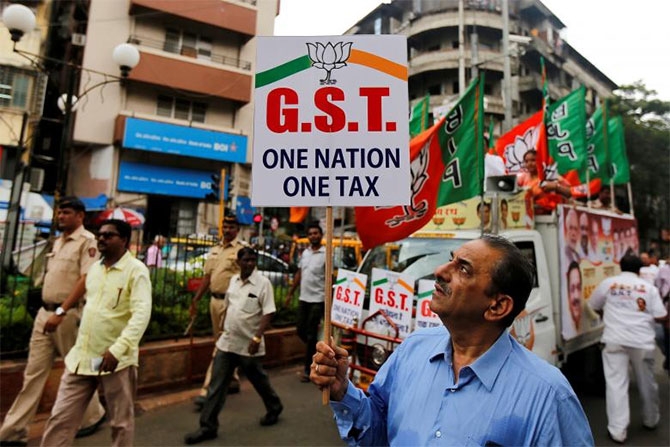GST as a game changer; Celebrating it's second anniversary..!
Total Views |
New Delhi, July 1: The introduction of GST has proved to be a game changer for Indian economy as it replaced multi-layered, complex indirect tax structure with a simple, transparent and technology–driven tax regime. It integrated India into a single, common market by breaking barriers to inter-State trade and commerce.
Marking the second said anniversary of the Goods and services tax implementation, it has till date eliminated cascading of taxes and reduced transaction costs, further enhancing ease of doing business and providing an impetus to the ‘Make in India’ campaign.

GST was launched on the July 1, 2017 in a majestic ceremony held in the Central Hall of Parliament on the midnight of June 30, 2017. However, the implementation of GST has not been without challenges especially in the early months.
Overcoming the challenges, the Centre ensured promoting Trade and Industry with seamless flow of tax credit, spurring economic growth and creating unified common national market.
Subsuming of taxes:
It was new experience of subsuming 17 different types of taxes under GST. Pre – GST, Trade and Industry had to undergo compliances under Central Excise, Service Tax and VAT and doing business in multiple states involved adhering to different VAT laws, compliance through different portals and answering to different authorities.
All that being unified into a single robust online system, starting up now has become simple with one-stop online GST registration for wanting to do business anywhere in the country.
Formalisation of economy:
More and more businesses moving in the formal economy is evident from the significant increase in the GST taxpayer base. Moving to the formal economy has brought in more visibility and hence more opportunities for Trade and Industry.
State borders:
The State boarder’s glitches and delays have come down significantly. Due to different VAT laws in different states, inter-state transactions were a pain for trade and industry. CST charged on inter-state transactions were an additional cost with no input-credit available and thousands of productive hours were wasted at state border crossings. Cost and time of doing inter-state transactions have come down significantly after implementation of E – way bill.
Return filing:
The original concept of four Tax returns in a month, being GSTR-3B, 1, 2 and 3, was gradually curtailed to two tax returns viz GSTR-3B and 1. Further the Centre extended due dates for filing tax returns as and when felt necessary. Quarterly Returns were also prescribed for small taxpayers.
Today, for the trade and industry whose turnover is below five crores, quarterly return filling system is proposed. This aims to benefit 93% of the taxpayers, reduce their compliance burden and increase ease of doing business.